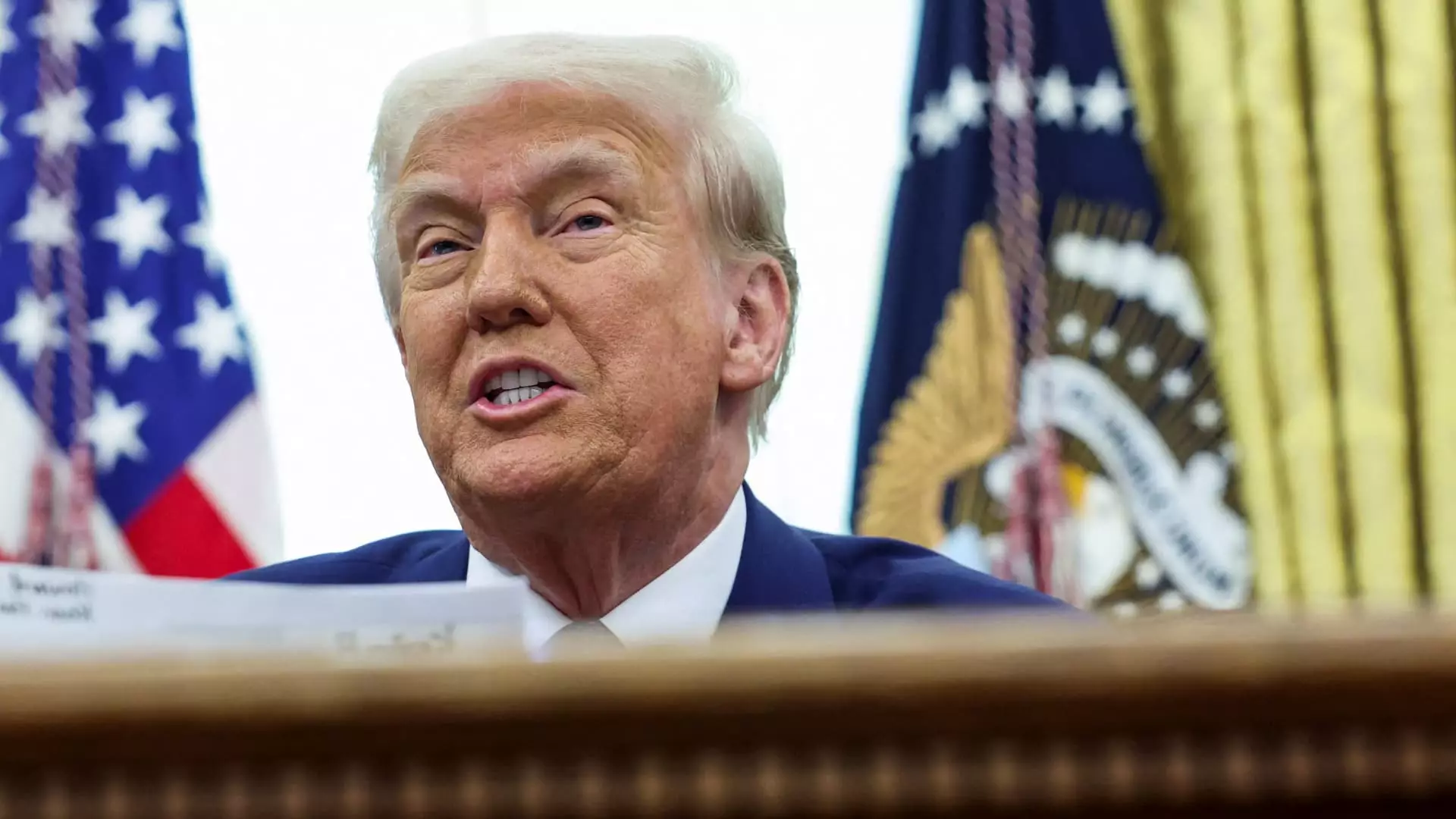In the world of finance, particularly regarding defense stocks, abrupt statements from high-ranking officials such as the President can lead to immediate and notable market reactions. On a noteworthy Thursday afternoon, after President Donald Trump’s unexpected suggestion of potentially cutting U.S. defense spending by half, defense-related stocks saw a significant decline. This declaration, made during a discussion at the White House, set off alarms among investors who worry about the implications of drastic budget cuts on defense contractors and the broader military-industrial complex.
The timing of Trump’s comments couldn’t have been more impactful. As he was exploring avenues for potential cooperation in defense reductions with global powers such as China and Russia, the market reacted swiftly. Trump’s proclamation that nearly $1 trillion spent on military expenses may be better allocated to other societal needs raised eyebrows. Following these remarks, major defense firms like Lockheed Martin, Northrop Grumman, and General Dynamics experienced drops in stock prices—1.6%, 3.4%, and 2.1% respectively—all indicating investor jitters.
Trump’s previous statements and positions on military expenditure offer a layer of complexity that further confounds market analysts and defense sector stakeholders. Throughout his presidency and ongoing 2024 campaign, he has conveyed a contrast between advocating for a robust military and considering significant cuts in defense spending. On one hand, his administration has sought efficiencies and cost-cutting measures, suggesting a reevaluation of government expenditure, with even tech mogul Elon Musk being enlisted for this purpose.
Conversely, Trump has maintained that a strong military is crucial for national security, even introducing ambitious projects like an “Iron Dome of America.” His simultaneous push for peace in Ukraine through increased military support and arms sales adds to a puzzling narrative that leaves both investors and policy analysts in a quandary. As Roman Schweizer from TD Cowen articulated, the contradictory messages have rendered the defense spending landscape bewildering.
What lies ahead in the U.S. defense strategy is uncertain and heavily dependent on upcoming dialogues with nations like China and Russia. If Trump’s vision of reducing military spending gains traction, it could lead to substantial shifts in how defense contractors operate. A significant cut to military budgets would inevitably prompt these companies to rethink production processes, workforce needs, and foreign relations tied to defense contracts.
Moreover, the overarching implications of such budgetary changes would extend beyond stock fluctuations; they could redefine U.S. defense priorities that have shaped global military dynamics for decades. Investors, policymakers, and defense advocates must stay attuned to Trump’s evolving stance and be prepared for a rapidly changing landscape that could profoundly affect national security and international relations alike. The era of predictable defense spending, rooted in long-standing commitment to military readiness, may be at a crossroads, raising questions about what the future holds for both fiscal responsibility and national security.

